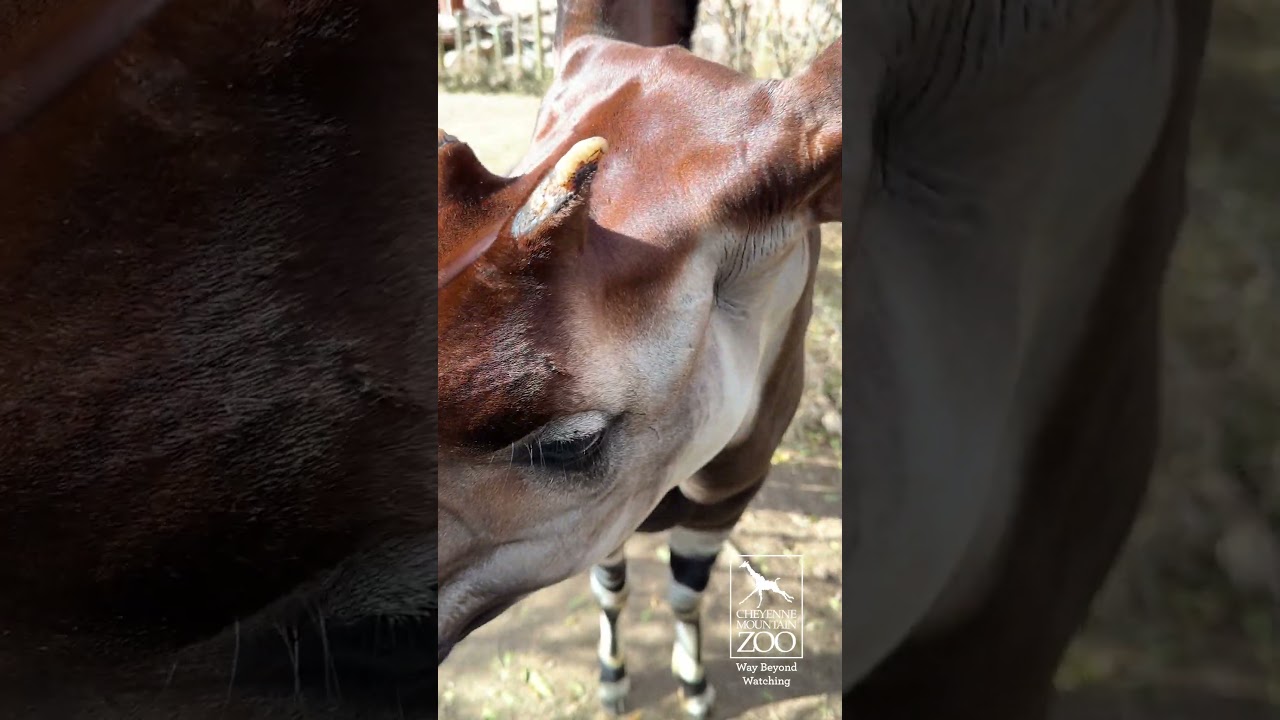– Discover the enchanting world of the okapi, a hidden gem of the animal kingdom.
– Dive into the social behavior and uniqueness of okapi interactions.
– Explore the importance of emotional enrichment for okapi and other zoo animals through tactile encounters like the ‘Bahati boop.’
Tap into your inner explorer; let’s voyage virtually into the heart of the lush Ituri Rainforest in the Democratic Republic of Congo. Here, nature has kept a phenomenal secret cloaked in almost mythological stripes until its unveiling to Western science in the early 20th century. This forest dweller, the okapi, can teach us a whimsical lesson in the art of uniqueness and the importance of emotional care for wildlife in their natural habitats and zoos.
Imagine a creature with the graceful neck of a giraffe, the body of a horse, and a coat that flaunts zebralike stripes—meet the okapi. Its velvety fur is chocolate brown, strikingly contrasted by horizontal white stripes accentuating its hindquarters. These are not just for show; they serve as camouflage, breaking up its body’s solid outline amongst the dense rainforest’s dense tapestry.
Their diet is an eclectic mix from the forest’s salad bar: leaves, twigs, fruits, and fungi are on the menu. Okapis have a long, prehensile tongue, much like their distant cousin, the giraffe, which they employ with finesse to forage for food and groom their velvety fur.
Despite their quiet grandeur, okapis are introverts, preferring solitary lives. Except for mothers with young or during the mating season, okapis would rather blend into the forest backdrop than seek out company. However, solitude doesn’t mean they lack social graces or the need for interaction.
Zoologists and zookeepers have observed and uncovered the importance of tactile interactions for many species, including the elusive okapi. A routine dubbed the ‘Bahati boop’ has come to light in the zookeeping world, a term coined for a gentle and enriching nose-to-nose greeting between humans and animals—named after Bahati, a particularly friendly okapi in a well-known zoo.
This engagement is no frivolous pastime; it’s a part of ’emotional enrichment’— a practice that aims to satisfy an animal’s social and psychological needs. Enrichment ensures that the inhabitants of zoos, sanctuaries, and conservation parks experience a semblance of natural interactions that would have been a part of their daily lives in the wild. A ‘boop’ is more than a touch; it’s communication, a check-in, a way of saying, “You’re seen, you’re understood, you’re cared for.”
However, don’t be mistaken into thinking that these interactions are initiated solely for the benefit of the animal. The ‘Bahati boop’ can embody a moment of humility and awe for humans—reminders of the majesty and intricacy of the biodiversity that shares this planet with us. It’s a gesture that recognizes the depth of sentience in our fellow earth inhabitants and the bonds we can forge without uttering a word.
The okapi’s charm is not its only claim to fame. Its mere existence sheds light on the critical importance of conservation efforts. Listed as endangered, with threats like habitat loss and poaching ever-looming, the okapi is a bellwether for environmental health and the need for sustainable practices in the regions they inhabit. Zoos and conservation programs play a pivotal role not just in preserving this species but in educating and raising awareness about the delicate ecosystems they represent.
Zoos have evolved from mere exhibitions of exotic creatures to becoming bastions of wildlife conservation and education. Behind the scenes, zookeepers act as custodians and advocates for these animals. Their dedication to emotional enrichment practices like the ‘Bahati boop,’ nutritional care, habitat simulation, and conservation breeding programs culminate in a lifeline extended to species like the okapi. These institutions have become a nucleus for reintroduction programs, genetic diversity studies, behavior research, and global collaborations aligned with species conservation.
The modern zoo is also a hub for innovation, sparking curiosity and nurturing empathy among its visitors. It encourages young minds to marvel at the wonders of Mother Nature and aids in cultivating the next generation of conservationists. Interactive enclosures, educational talks, keeper experiences, and even augmented reality applications have transformed how we engage with and learn from the animals in these conservation centers.
Enlightenment, however, should not stop at the gates of a zoo. The okapi’s story is a compelling call to action for habitat preservation, anti-poaching efforts, and supporting the local communities intrinsic to the well-being of wildlife and their environments. Every okapi saved, every forest acre protected, and every local community supported is a stride towards a sustainable coexistence with our planet’s wondrous creatures.
The narrative of the okapi is a flourish of hope; it is the tale of life’s tenacity. Each ‘Bahati boop’ symbolizes the delicate intersections between human and animal realms and the unified efforts indispensable for the survival of majestic creatures such as these.
In parting, remember that whenever you marvel at the natural world, engage in discussions about conservation, reduce your environmental impact, or support ethical zoos and conservation projects, you spread some good okapi vibes. These actions may seem as subtle as a quick boop, yet they ripple outwards, cultivating positive change for the planet and for species that enrich our world in ways beyond our imagination.
So, the next time you encounter the extraordinary flora and fauna of our world, whether in person or through the stories of conservation, pause and reflect on the interconnectedness of life. Take that moment to nourish a deeper appreciation for nature’s tapestry’s unseen and unsung elements. For in the realm of these extraordinary creatures, every action, every effort, and every bit of awareness can contribute to a future where the stripes of the okapi blend not into oblivion but against the vibrant backdrop of a thriving, protected wilderness.
*****
Source Description

